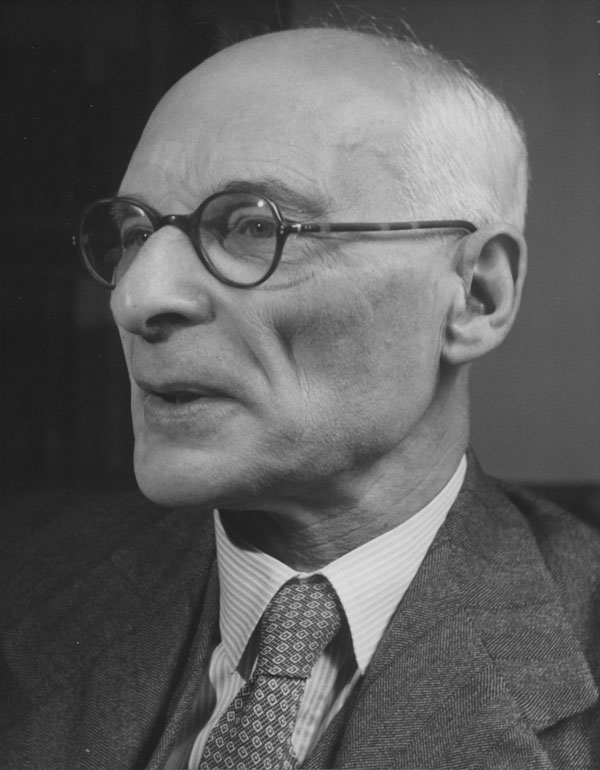LSE spent the Second World War far from Houghton Street. LSE Archivist Sue Donnelly writes about the School’s war time evacuation to Cambridge.
Despite the Munich Agreement of 1938 many in Britain, including the government, were preparing for war – and among them was LSE Director Sir Alexander Carr-Saunders. By the summer of 1939 the Court of Governors agreed to arrangements with the Ministry of Works to take over LSE buildings on Houghton Street, while the Director sought out a host and accommodation in Cambridge. On 25 July 1939 the governing body of Peterhouse recorded that:
The proposal of the University Committee that the College should house the London School of Economics in the event of war was approved. It was agreed, subject to any general agreement between Colleges, to charge £3 3s a week for board residence. Members of LSE staff would have high table privileges.

Carr-Saunders liaised with Paul Vellacott, Master of Peterhouse and previously headmaster of Harrow School, but the collaboration between the social sciences of LSE and Cambridge’s oldest college, founded in 1284, was not an obvious one. However there was at least one personal link between the two institutions. Michael Postan had been appointed Professor of Economic History at Cambridge in 1938 and was a fellow of Peterhouse. Postan had completed his first degree at LSE in 1924 before doing an MSc (Econ) in 1926 and working as a research assistant to the economic historian, Eileen Power. They married in 1937. Postan worked at UCL and LSE until his move to Cambridge in 1935.
On 1 September 1939 the Ministry of Works took over the Houghton Street buildings to house the Ministry of Economic Warfare, headed by Hugh Dalton, the former LSE lecturer. The School moved to Peterhouse and rented Grove Lodge on Trumpington Street, Cambridge, to provide common rooms, a lending library and facilities for classes. There was some concern about space for teaching but arrangements were made for LSE students to use Cambridge libraries and for combined teaching with Cambridge University and Bedford College, which also evacuated to Cambridge. Wartime student numbers fell to 620 students and many staff entered government service. 46 teachers remained and most of the economics teaching rested on Friedrich Hayek and Arthur Lewis.

LSE was not entirely reconciled to its new home during its first year, and the relative peace of the first few months of war tempted Carr-Saunders to consider a return to London, despite the government issuing a memo urging evacuated colleges to remain out of the London. When the Ministry of Economic Warfare was moved from Houghton Street in March 1940 LSE planned to return to the East Building. On 3 September 1940 Carr-Saunders wrote to Vellacott to confirm that the School intended to re-open in London on 7 October.
However staff and students were unconvinced and several members of staff urged the Director to reconsider. A student petition indicated that 67 per cent of the students opposed the return. William Robson declared “Frankly it would be sheer madness to return”. The start of the London blitz and the Ministry of Aviation’s move to Houghton Street made return impossible. Carr-Saunders wrote to Vellacott “with a very real sense of embarrassment” and LSE remained in Cambridge until the end of the war.

Student numbers continued to fall and by 1943/44 women made up 68 per cent of the student body. For the Director this was not all bad:
The tendency towards uniformity in age, aim and experience among the students, while involving loss in one direction, has meant gain in another; the student body has become more of a unity.
Financially the School did not suffer, as Carr-Saunders noted in his 1943 report:
The financial position of the School has been fortunate since the outbreak of the war; the expenses on our London buildings have been assumed by the Government and the School has been accommodated at little expense in Cambridge, while losses in students’ fees have been made good by savings due to absence of members of staff on war leave. The accounts have thus shown surpluses.
There were some stresses to Cambridge life particularly for staff commuting between London and Cambridge to continue teaching while undertaking war work. Student accommodation was also an issue. Vera Anstey took on the role of billeting officer, cycling around Cambridge to persuade private householders to take in LSE students.
![t Team (Cambridge) 1944/45. Back row (left to right): M C Tubb, E A Crabbe, R G Sturley, A H Harvey, A T Prix [?], G.K Amachree, J H Ryan, G U Rovette. Front row (left to right): G E Mills, C R Furlong (vice capt), T H Connick, (capt), R H Brook, R T Cousins. Taken in Cambridge. Photo donated by Montague Tubb. LSE](https://blogsmedia.lse.ac.uk/blogs.dir/65/files/2018/02/LSE-Cricket-Team-Cambridge-1944-45.-LSE.jpg)
By 1944 LSE was again considering its return to Houghton Street and worrying about the difficulties of evicting the Ministry of Aviation. In July 1945 the School had notice of a return to London and the removal vans were booked for 30 August 1945. The School re-opened on 29 October, four weeks later, following an intensive clean and tidy:
Valiant work was done by our trusty band of porters and also by student volunteers who swept and scrubbed with the best.
It was a good way to mark the School’s 50th anniversary and in 1945/1946 student numbers rose again to 2,151.






1 Comments